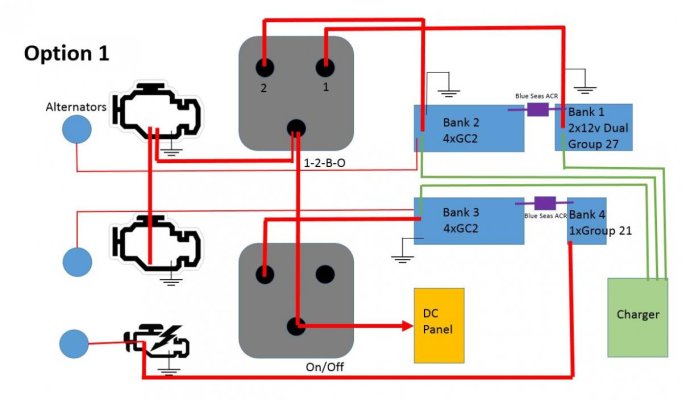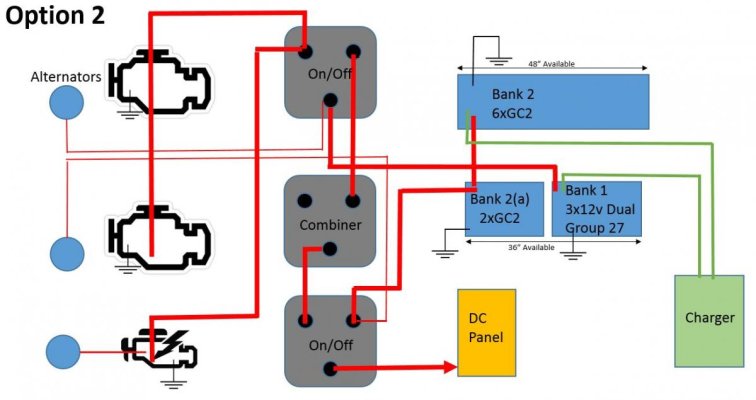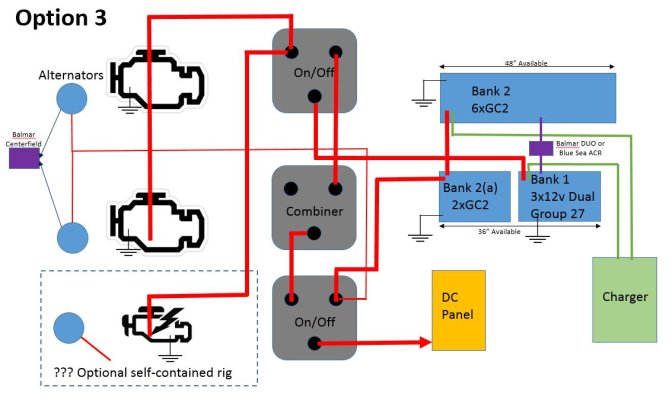I am sure that what is being proposed here will work.
But, I have trouble justifying the excess no of batteries for starting. Here is what I have:
4x6v Golf cart for the house
1 single 4D Start for 2 x TAMD41 Volvos + 1 x Westerbeke 4kw genset.
1 x combining solenoid, should either the house bank or the start bank die and I need some juice from the live bank.
When I bought this boat in 1994, there were 2 x house banks, 1 was 2x 8D, one was 2x 4D. I reduced demand by changing fridges, added an Inverter/charger (Xantrex 2000W, that charges at 100 amps). All of this is regulated by "smart" 3 stage regulators.
I replaced the 4x6v batteries in the house system after 10 yrs, 2 yrs ago, when they showed slow charging. The 1 x 4D start battery is still providing good service after 12 years, never uses a lot of water, never slow to turn over an engine.
I haven't had to use the combining switch to start, in 21 years.
In my Motorhome, I have a pair of car sized start batteries, wired in parallel. they start the Cummins ISL400, that is beside them, and the Onan 10kw genset that is 40' away, without difficulty. There is a combining solenoid, should the need arise.
There are thousands of Motorhomes set up this way. I know of none that have a dedicated start battery for the genset and another for the main engine.
If yours was mine, I would save the weight and cost of the extra start batteries and get one big enough for the big Volvos, use it serially, on all three engines, and sleep well.



 We have a starting bank and a house bank. One alternator/voltage regulator for the house bank and one for the starting bank. Nothing to switch unless there is an issue and there hasn't been. I guess what I'm trying to say is one large house bank is simpler than 2 smaller ones and less risk of drawing down a set of batteries in a split house bank.
We have a starting bank and a house bank. One alternator/voltage regulator for the house bank and one for the starting bank. Nothing to switch unless there is an issue and there hasn't been. I guess what I'm trying to say is one large house bank is simpler than 2 smaller ones and less risk of drawing down a set of batteries in a split house bank.
